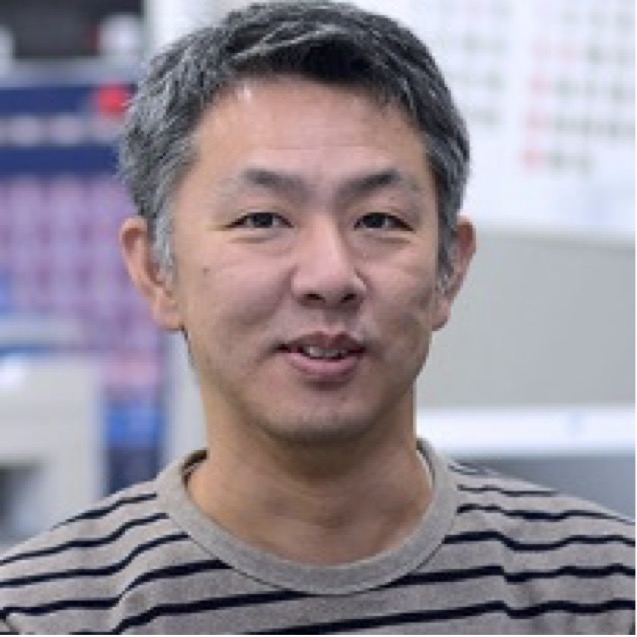Related Outline
I am conducting research using ascidian (“hoya” in Japanese) as a model organism to investigate how cells communicate and coordinate with each other, ultimately leading to the emergence of functional individuals that transcend hierarchical levels. Ascidians are simple and efficient animals consisting of the essence of chordates. Taking advantages of the strengths of this model organism, we aim to tackle big questions in biology that were previously unsolvable. Specifically, I seek to understand the mechanisms that generate the evolutionarily conserved morphology of chordates from a mechanobiological perspective. In addition, I am also investigating the mechanisms of metamorphosis, the evolution of transparency in organisms, as well as the evolution and the development of chordate motor neural circuits.
Career
Kohji Hotta graduated at Hokkaido University and completed his Master’s study and doctoral degree at Kyoto University (Supervisor Prof. Nori Satoh). He did his postdoctoral work with Prof. Takashi Gojobori at National Institute of Genetics. He joined Keio University as Assistant Professor in 2005, Associate Professor in 2019.
Representative Achievements
- Admp regulates tail bending by controlling ventral epidermal cell polarity via phosphorylated myosin localization
Yuki S. Kogure, Hiromochi Muraoka, Wataru C. Koizumi, Raphael Gelin-alessi, Benoit Godard, Kotaro Oka, Carl-Philipp Heisenberg*, and Kohji Hotta*
Development
DOI: doi.org/10.1242/dev.200215 - MiniSOG2-mediated Specific Photoablation of Motor Neurons in Ascidian Embryos.
Madoka K. Utsumi, Taichi Akahoshi, Kotaro Oka, Hotta,K.*
bioprotocol,
DOI: https://doi.org/10.21769/BioProtoc.4537 - Developmental Table and Three-Dimensional Embryological Image Resource of the Ascidian Ascidiella aspersa
Funakoshi HM, Shito TT, Oka K, Hotta, K.
Front Cell Dev Biol.
DOI: https://doi.org/10.3389/fcell.2021.789046 - Bilaterally Asymmetric Helical Myofibrils in Ascidian Tadpole Larvae.
Matsuo K, Tamura R, Hotta K, Okada M, Takeuchi A, Wu Y, Hashimoto K, Takano H, Momose A, Nishino A.
Front Cell Dev Biol.
DOI: https://doi.org/10.3389/fcell.2021.800455 - A single motor neuron determines the rhythm of early motor behavior in Ciona.
Akahoshi T, Utsumi MK, Oonuma K, Murakami M, Horie T, Kusakabe TG, Oka K, Hotta, K.
Sci Adv.
DOI: https://doi.org/10.1126/sciadv.abl6053 - Spatiotemporal dynamics of single cell stiffness in the early developing ascidian chordate embryo.
Authors: Y. Fujii, W. C. Koizumi, T. Imai, M. Yokobori, T. Matsuo, K. Oka, Hotta, K.*, T. Okajima*
Commun. Biol.
DOI: https://doi.org/10.1038/s42003-021-01869-w - Two-Round Ca2+ transient in papillae by mechanical stimulation induces metamorphosis in the ascidian Ciona intestinalis type A.
M. K. Wakai, M. J. Nakamura, S. Sawai, Hotta, K.*, K. Oka
Proc. R. Soc. B Biol. Sci.
DOI: https://doi.org/10.1098/rspb.2020.3207 - Phylogenetic comparison of egg transparency in ascidians by hyperspectral imaging.
T. T. Shito, N. Hasegawa, K. Oka*, Hotta, K.*
Scientific Reports.
DOI: https://doi.org/10.1038/s41598-020-77585-y - The ontology of the anatomy and development of the solitary ascidian Ciona: the swimming larva and its metamorphosis.
Hotta, K.*, Dauga, D., Manni, L*
Scientific Reports.
DOI: https://doi.org/10.1038/s41598-020-73544-9 - Different strategies for tissue scaling in dwarf tailbud embryos revealed by single-cell analysis.
Matsumura, K.D., Nakamura, M.J., Koizumi, W.C., Hotta, K.*, Oka, K
Dev Biol.
DOI: https://doi.org/10.1016/j.ydbio.2020.01.008

